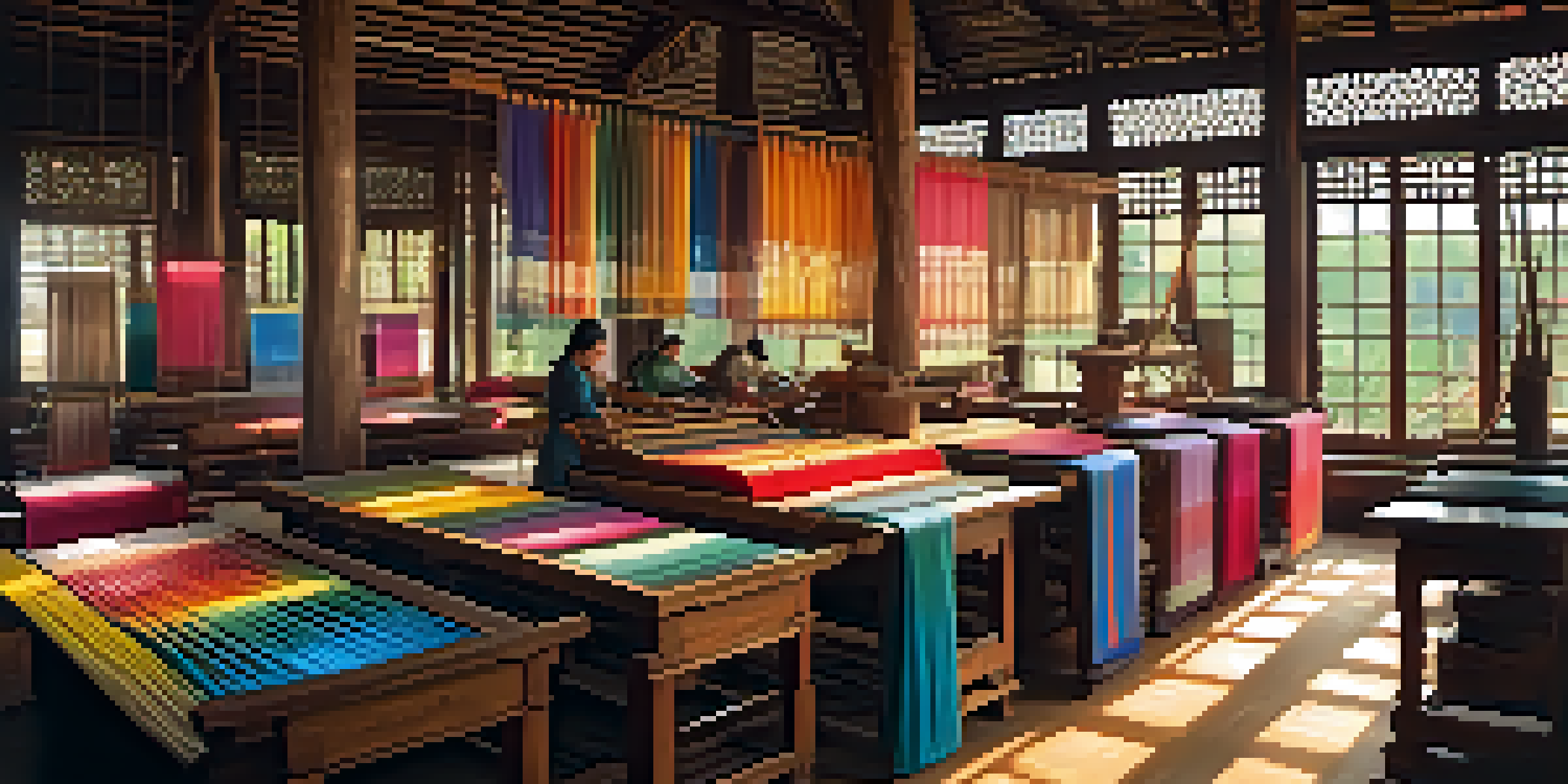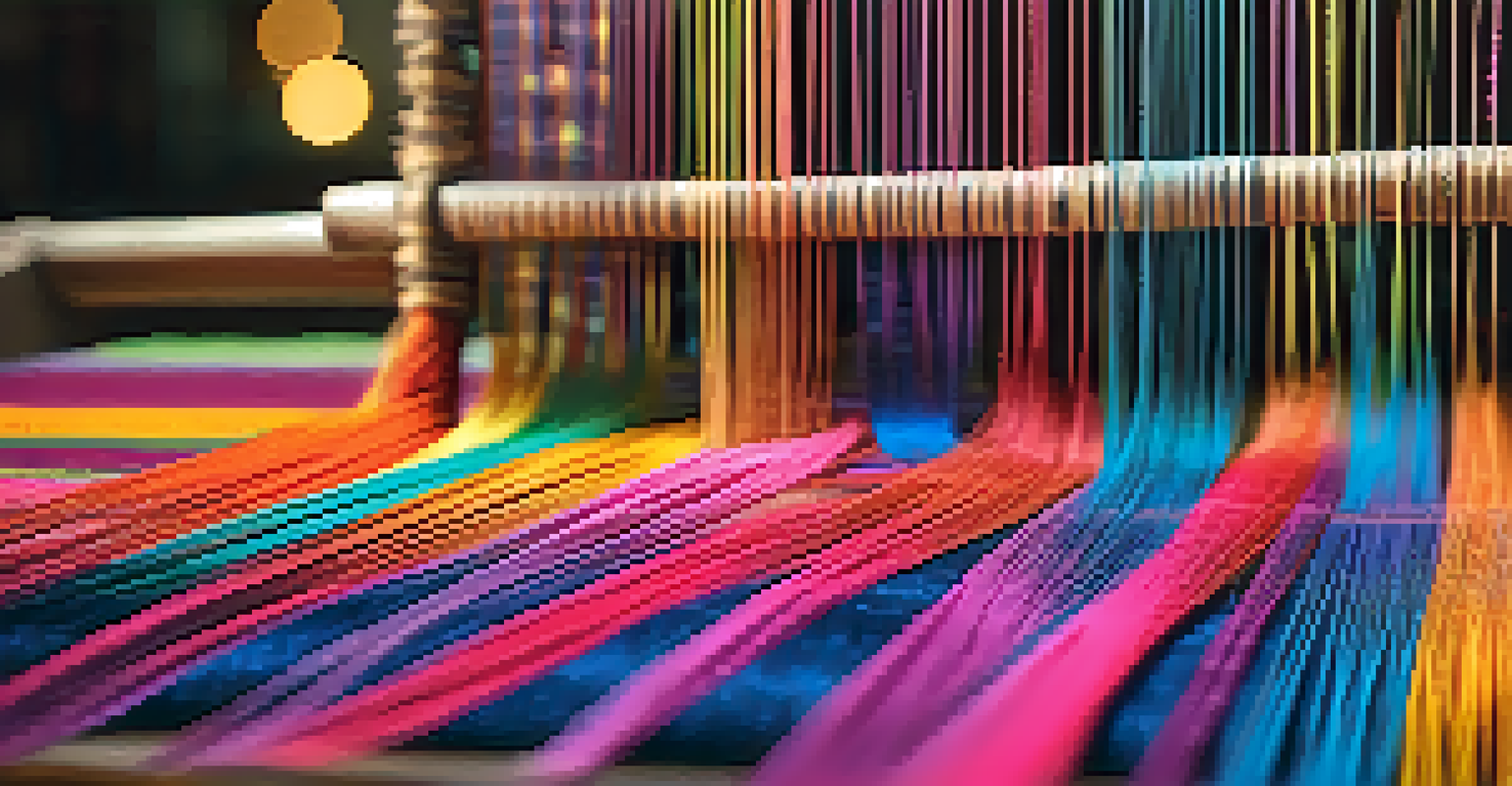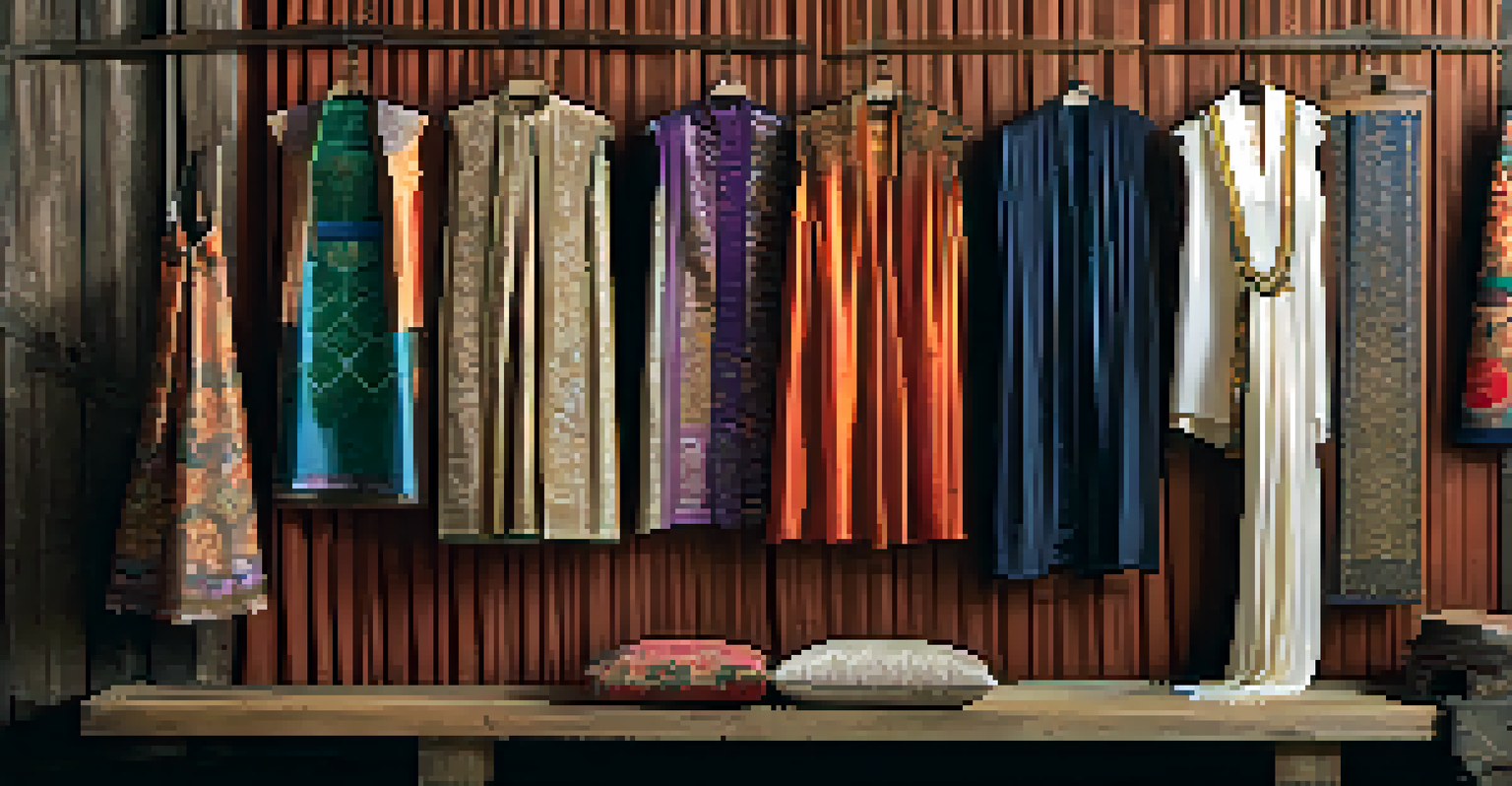Explore the Art of Thai Silk Weaving in Cultural Workshops

Understanding the Significance of Thai Silk Weaving
Thai silk weaving is more than just a craft; it’s a cultural heritage that has been passed down through generations. This intricate art form is deeply woven into the fabric of Thai identity, reflecting the history and traditions of the region. Each piece of silk tells a story, showcasing the skills and creativity of the artisans who create it.
Art is the most beautiful of all lies.
Historically, silk production in Thailand can be traced back to the time of the Khmer Empire. It was during this era that the techniques for weaving became refined, leading to the breathtaking patterns and textures we admire today. Understanding this context allows us to appreciate the rich legacy behind each silk garment.
By participating in workshops, individuals not only learn the technical aspects of weaving but also gain insight into the cultural narratives that accompany this beautiful craft. It’s a journey that connects the past with the present, making it a truly enriching experience.
The Experience of Attending a Thai Silk Weaving Workshop
Attending a Thai silk weaving workshop is like stepping into a living museum of craftsmanship. Participants are often welcomed by skilled artisans who share their knowledge and passion for weaving. It’s a hands-on experience where you can feel the textures of silk and learn about the various tools used in the process.

Workshops typically begin with a brief introduction to the history of silk in Thailand, setting the stage for what’s to come. As you learn to weave, you discover the meticulous techniques involved, from dyeing the silk to creating intricate patterns. It’s a fantastic opportunity to engage your senses and unleash your creativity.
Cultural Heritage of Thai Silk
Thai silk weaving is a vital cultural heritage that reflects the history and identity of Thailand.
The atmosphere in these workshops is usually warm and inviting, fostering a sense of community among participants. Whether you are a novice or have some experience, everyone is encouraged to express their unique ideas through their weaving. This collaborative spirit makes the learning process even more enjoyable.
Key Techniques in Thai Silk Weaving
Thai silk weaving involves several key techniques that give it its distinctive look and feel. One of the most important is the process of hand-weaving on a traditional loom, which requires precision and skill. Each thread is carefully placed to create beautiful patterns that are not only visually appealing but also tell a story.
Craftsmanship is a way of life. It’s not just what you do; it’s who you are.
Another significant technique is dyeing, where natural dyes derived from plants and other organic materials are used. This not only makes the silk vibrant but also sustainable, as artisans have been practicing eco-friendly methods for centuries. Learning about these techniques in a workshop can deepen your appreciation for the art of silk weaving.
Finally, the finishing touches, such as trimming and ironing, are crucial in shaping the final product. These details can elevate a simple piece of fabric into a work of art. As you engage with these techniques in a workshop, you’ll gain a newfound respect for the craftsmanship behind each silk creation.
Exploring the Different Types of Thai Silk
Thai silk comes in various types, each with its own unique characteristics and uses. One popular type is 'Mudmee' silk, known for its tie-dye patterns that create stunning designs. This type of silk is often used for traditional garments, making it a favorite among locals and tourists alike.
Another type is 'Pha Khao Ma,' which is a traditional Thai scarf made from silk. It showcases the beautiful artistry involved in the weaving process and serves as a versatile accessory. Understanding these different types allows workshop participants to choose their projects more thoughtfully.
Hands-On Learning Experience
Participating in silk weaving workshops offers a unique, hands-on experience that fosters creativity and community.
By exploring these varieties in a workshop, you not only learn about their distinct features but also how to incorporate them into your designs. This exploration adds an exciting layer to the weaving experience, encouraging creativity and personal expression.
The Role of Community in Silk Weaving Workshops
Community plays a vital role in the preservation and promotion of Thai silk weaving. Many workshops are run by local cooperatives that aim to empower artisans and keep traditional practices alive. When you participate, you support these communities and help sustain their livelihoods.
These workshops often foster collaboration among participants, creating a sense of camaraderie as everyone learns together. Sharing stories, techniques, and even laughter, attendees often find themselves forming lasting connections. This communal aspect enriches the experience, making it more than just a craft.
By engaging with local artisans and fellow participants, you contribute to a culture of sharing knowledge and skills. This connection to the community adds depth to your learning experience, reminding us that art is often best appreciated when shared.
Benefits of Learning Thai Silk Weaving
Learning Thai silk weaving comes with a plethora of benefits, both personal and cultural. On a personal level, it offers a chance to develop fine motor skills and enhance creativity. The meditative nature of weaving can also provide a sense of relaxation and mindfulness, allowing participants to unwind.
Culturally, engaging in this craft fosters a deeper understanding of Thai traditions and customs. By learning the stories and techniques behind the art, participants become ambassadors of Thai culture, sharing their newfound knowledge with others. This cultural exchange enriches the global appreciation for craftsmanship.
Sustainable Craftsmanship
Thai silk weaving promotes sustainable practices, empowering local artisans while preserving traditional techniques.
Additionally, mastering a new skill can boost confidence and encourage lifelong learning. Whether you’re creating a gift or a personal keepsake, the sense of accomplishment that comes from weaving your own silk piece is truly rewarding.
Continuing the Legacy of Thai Silk Weaving
Continuing the legacy of Thai silk weaving is crucial in ensuring its survival in a fast-paced world. By participating in workshops, you’re helping to keep this beautiful art form alive. Each piece you create contributes to the narrative of Thai silk and its importance in the cultural landscape.
Moreover, as more people engage with this craft, there’s a growing interest in sustainable practices and local artisanship. This shift not only benefits the community but also promotes eco-friendly fashion. By choosing to wear or gift handmade silk items, you’re making a statement about the value of tradition.

Ultimately, the revival and continuation of Thai silk weaving depend on passionate individuals who are willing to learn and share their experiences. By immersing yourself in this art form, you become part of a larger movement that honors craftsmanship and cultural heritage.